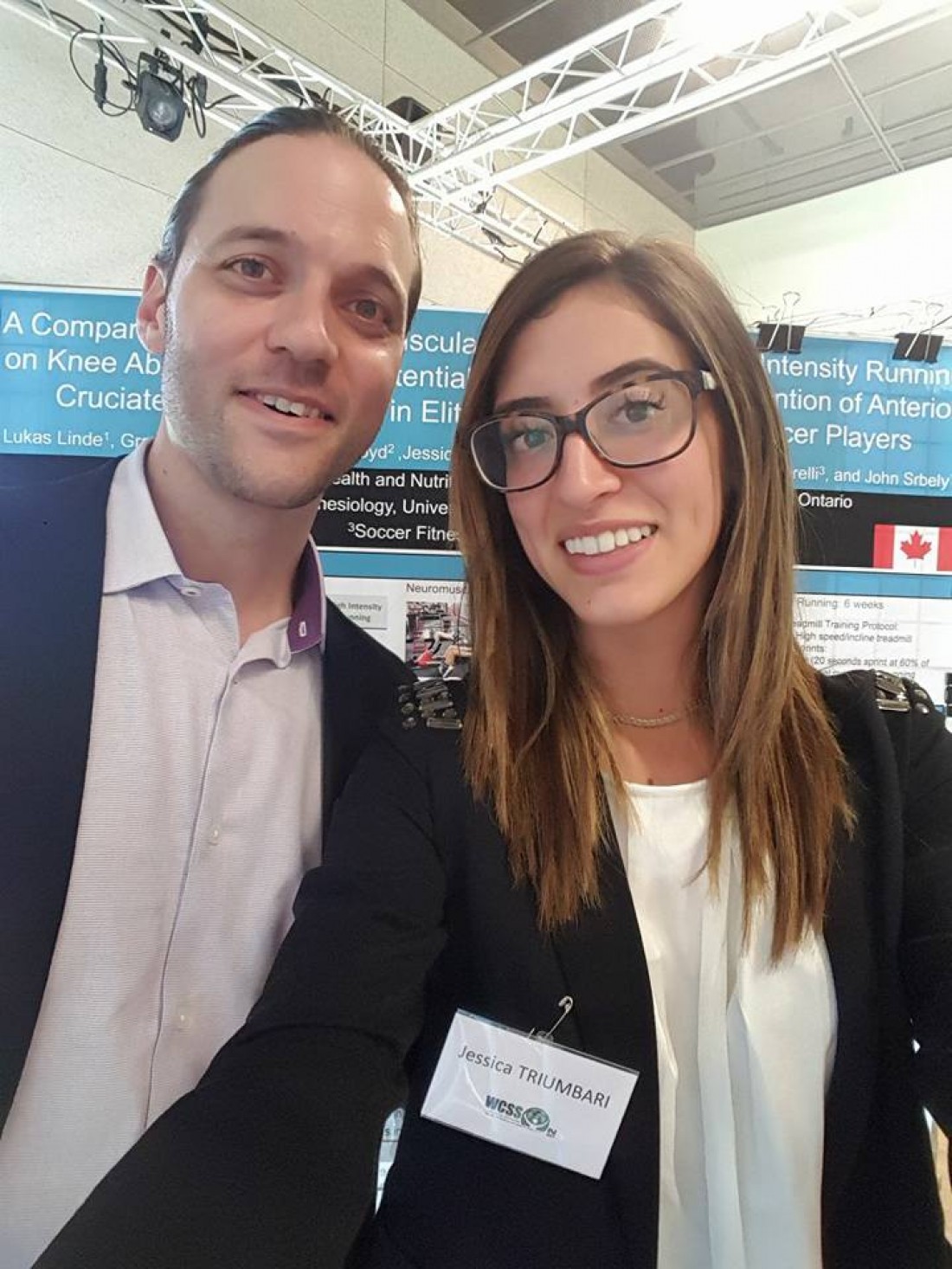One of the best things about attending the 5th World Conference on Science and Soccer was the opportunity to share and discuss my research with other academics, sports scientists and fitness coaches. In this series of short articles, I will summarise and discuss each of the three different research projects that our team from Soccer Fitness Inc. presented at the Conference.
The second study I am reviewing is titled “A comparison of hip neuromuscular strengthening and high intensity interval training on knee abduction angle in elite youth female soccer players”, which sought to compare the effectiveness of two different types of training – an ACL prevention program and a speed endurance / running program – on markers of physical performance and injury risk in female soccer players.
Something very unique about this research is that our proposal for this study was submitted through the University of Guelph, in part so that the school could purchase and use a state-of-the-art 3D motion capture system that includes 3D cameras, software, and a treadmill with force plates. The pre- and post-training assessments performed in this study (to examine changes in knee injury risk in the players) included the use of this new equipment.
We recruited players from 3 different elite female youth soccer teams (Under-15 age category) to participate in this study, and randomly assigned all players into 3 groups:
- ACL-prevention training group (“Knee Training” or “KT” group)
- Speed endurance training group (“Treadmill Training” or “TT” group)
- Control group (“CT” group)
Prior to the training programs, all players underwent physical fitness testing including the following assessments:
- Linear running speed (10, 20, and 35 metres)
- Vertical jump
- Yo-Yo Intermittent Recovery Test (a test of endurance and high intensity running ability)
- Assessment of knee abduction angle using the Qualysis 3D motion capture system, during running, and single-/double-leg drop jump movements
The two training-based groups performed 6-week, 2 training sessions per-week programs at the Soccer Fitness Training Centre. Following these 6-week training regimes, players underwent the same fitness assessments, and differences/comparisons between the pre- and post-training test results were examined.
Results of this study provided some interesting and useful information for youth soccer coaches and fitness coaches. The KT group (which performed a 6-week ACL prevention program that included plyometrics, strength training, and balance training) experienced a significant reduction in knee abduction angle of 8% in the single-leg squat test, and 10% in the drop jump test. This represents a significantly reduced risk of ACL injury for Under-15 aged female soccer players, who happen to be in the highest risk category for such injuries.
The TT group experienced a significant improvement in their Yo-Yo Intermittent Recovery Test scores, with an average increased distance covered of over 320 metres. Since the average distance of a sprint or high intensity run in soccer is only 10 metres, this means that the players in our study improved their capacity to perform an extra 30-35 sprints or fast runs per game. Thus, the use of a treadmill-based speed endurance training program with Under-15 aged female players was shown to be effective at improving high intensity running ability – which has been shown in the past to be a key predictor of performance in female soccer players in this and older age categories.
So what does this all mean for coaches and fitness coaches working with young female soccer players? The ideal fitness training program for female players should include exercises designed to reduce the risk of ACL injury (the most prevalent type of injury in female soccer players) and other to improve high intensity running ability (the best predictor of performance in female soccer players).
In our study, we identified two separate 6-week training programs, each of which was effective in achieving one of these two training objectives. Thus, it may be possible that a combination of the two training programs used in our study – that is, an ACL prevention program including plyometrics, strength training, and balance training, plus a speed endurance training program performed using a high speed/high incline running treadmill – would be the ideal choice to use with Under-15 aged female soccer players.
More research, examining the effectiveness’s of combined injury prevention and performance enhancement training programs like the ones used in our study, is warranted in order to determine what exactly the best practices are for elite female players. At Soccer Fitness Inc., we are looking forward to conducting some such research and attempting to answer this question.
I hope you enjoyed this article. As always, please feel free to post your thoughts or comments below.


Leave A Comment